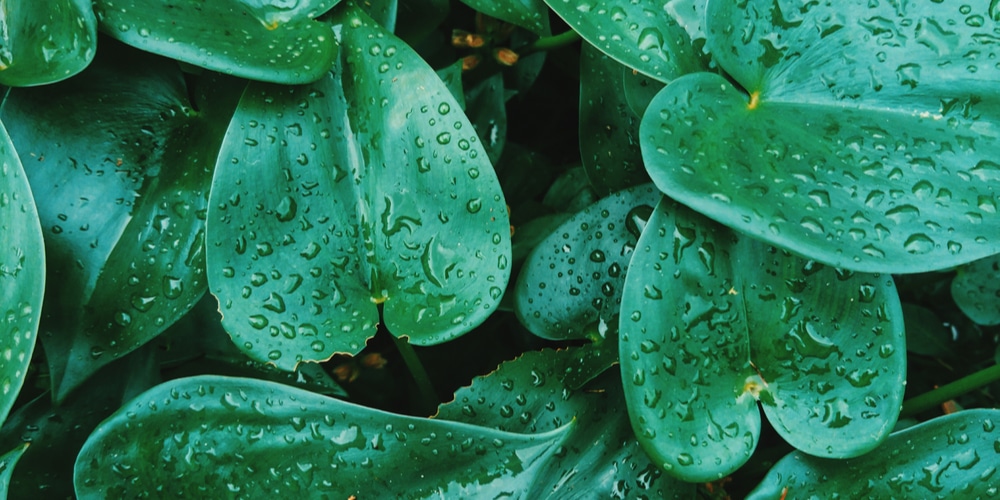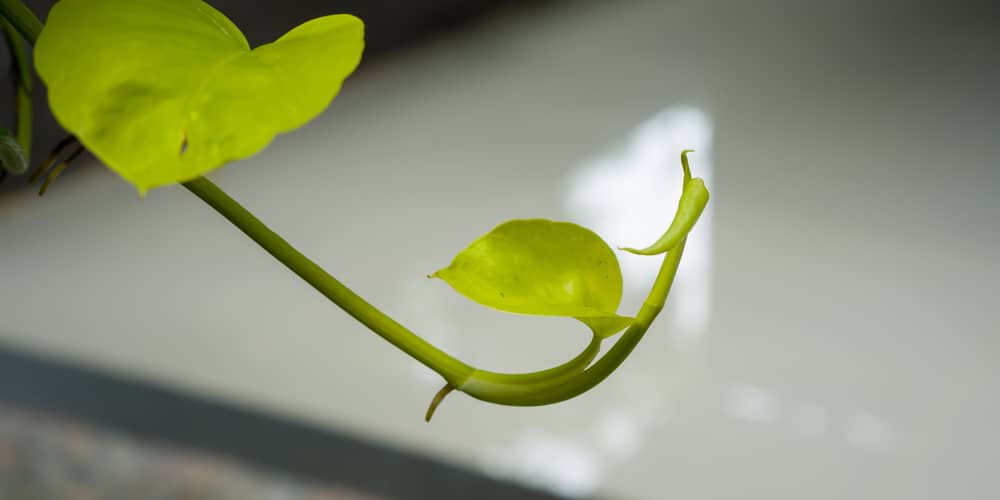The Philodendron Cordatum is a very rare member of the Araceae family. Many people, even plant enthusiasts, have never heard of this variety. The plant is commonly mistaken for the more prevalent Philodendron Hderaceum plant.
Philodendron Cordatum is a beautiful tropical plant that originates from the rainforests of southeast Brazil. It has lovely bright green leaves, heart-shaped leaves. Let’s look at how to grow and care for a Philodendron Cordatum plant.
What is a Philodendron Cordatum?
The Philodendron Cordatum has large heart-shaped leaves that are an attractive light green color. These plants are eye-catching as they have slightly lighter veins than other Philodendron varieties.
These plants are relatively fast-growing and can reach a staggering 50 feet tall when supported by a tree. Some of the largest Philodendron leaves ever recorded has grown to 3 feet long. The plant is only likely to reach these proportions when grown in its natural habitat. It’s unlikely you’ll be able to grow such a large plant in your home as the humidity is different from in the rainforest.
You can keep your Philodendron Cordatum plant shorter and more compact by regularly pruning its leaves and vines. Plants that are grown in a container rather than the ground won’t get too big. These plants can be grown as houseplants or outside in the right conditions. If you live in USDA zone 9 to 11, you can grow your plant outdoors.
- Proper name: Philodendron cordatum
- Grows almost anywhere in the house, except full sun
- Keep soil evenly moist, but not wet or dry
- Great in a hanging pot
- Garden & Patio
Caring for a Philodendron Cordatum
The Philodendron Cordatum is relatively easy to care for and has similar requirements as other tropical plants, particularly those in the Araceae family. You’ll need to get the light, water, and temperature right so that your plant can thrive. Humidity is also vital to Philodendron Cordatum’s. Here are some tips to help grow a healthy specimen:
Sunlight
Like most species of Philodendron, the Cordatum requires bright indirect sunlight. Lighting conditions will determine how vigorously your plant will grow. Ensure you don’t leave your plant in direct sunlight, or the UV rays will burn your plant’s delicate leaves. Plants can suffer from sunburn, which will create brown patches on the leaves. Once your plant’s leaves burn, they won’t completely revive, and you’ll have to wait for your plant to grow the next foliage. In some cases, sunburn and dehydration can even be fatal to plants. This plant doesn’t tolerate low light levels, as the leaves will start to look dull and faded.
Watering Requirements
Most species of Philodendrons drink lots of water, especially if the weather is hot. You can generously water your plant and then wait for the topsoil to dry out before rewatering. Most people find that tropical plants need to be watered once a week. It’s best to use filtered water or collect rainwater for your plant as Philodendrons are sensitive to chemicals in tap water. If you live in an area with hard water, this may cause an excess of minerals in the soil, which will affect the health of your plant.
Temperature
Philodendron Cordatum’s should be grown in temperatures of between 65° and 80° degrees Fahrenheit. These plants also prefer a slightly lower nighttime temperature of approximately 55° F. It’s also a good idea to keep your plant away from drafts from windows and air conditioning. Don’t place your plant too close to a heater, as this will dry out the leaves.
Humidity
As the Philodendron Cordatum is a tropical plant, it requires high humidity levels of between 40 and 60%. This is hard to achieve in your home, and these plants can acclimatize to slightly lower humidity. A dry climate with low humidity will end up killing your plant. These plants don’t do well in the average indoor humidity.
If you want your plant to thrive, you can plant it in a greenhouse or keep it in your bathroom, where the steam from the shower will create the right humidity. Alternatively, invest in a humidifier.
Fertilizer
The Philodendron Cordatum can be fertilized using a diluted mix or a fertilizer designed specifically for tropical plants. You can apply fertilizer month throughout the growing season. It may be a good choice to use organic fertilizer on this plant as they are relatively sensitive.
Pests
There are three types of insect pests that affect the Philodendron Cordatum; spider mites, aphids, and mealybugs. Here’s how to get rid of these creepy insects:
Spider mites
Spider mites cause plants’ leaves to turn yellow and start to droop. If you look closely at the plant, especially under the leaves, there will be a fine web. This is a sign of spider mites. If there’s an infestation, you’ll also see light-colored bugs.
These insects can quickly damage your plants, so it’s essential to take steps to eliminate them as soon as possible. Spider mites thrive in hot and dry climates, so if you move your plant to the bathroom, which has a humid environment, they will die. This method may not be 100% effective but is worth a try. If it doesn’t work, you can use an insecticide spray or neem oil to kill these pests.
Aphids
Aphids are also known as greenflies. They generally congregate on new growth and drink sap from your plant’s leaves. These insects can quickly multiply, and you can end up with an infestation. It’s a good idea to quarantine a plant with aphids so that they don’t transfer to other houseplants. You can use a hosepipe of the shower to wash aphids off your plant’s leaves. Do this every couple of days until they are gone. If you’re struggling to get rid of the insects in this way, you can use an insecticidal spray.
Mealybugs
Mealybugs are common insects that also feed on the sap of plants. They look like tiny cotton balls and may seem cute but are very destructive. You can remove mealybugs by hand.
Conclusion
Philodendron Cordatum’s are rare and attractive tropical plants that are members of the Araceae family. They originate from the rainforests of Brazil and have beautiful green, heart-shaped leaves. These plants are relatively easy to care for but require enough humidity to thrive. Many people find that they are unable to create the correct environment for these plants. Placing your plant in the shower or investing in a humidifier will help you look after your plant.
Last update on 2025-06-06 / Affiliate links / Images from Amazon Product Advertising API


